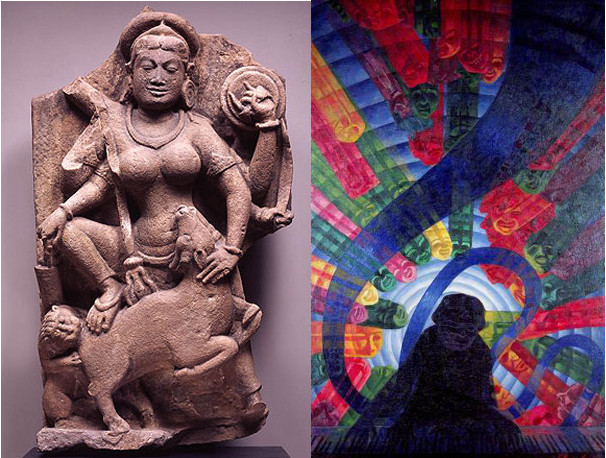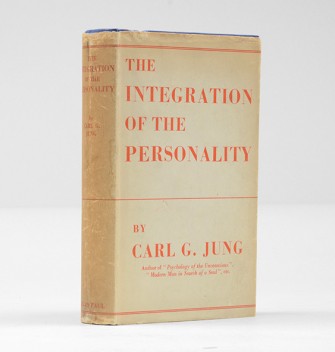[This is part of the series Opening the door into emptiness]
“Sobering and quieting the mind, thus making it susceptible to divine influences” summarizes the understanding of music Cage had in 1948: the importance of the universal over the merely personal, the spiritual over the material. “A composer’s confessions” demonstrates how the religious view of art learned from Sarabhai and Coomaraswamy had permeated Cage’s thought. Cage warns about the evils of using music “as an aid in the acquisition of money and fame”; instead it should be used “as a handmaiden to pleasure and religion.” He praises the Eastern attitude of making music “disinterestedly, that is, without concern for money or fame but simply for the love of making it.” He asserts that the rise of harmony was a wrong turn in Western musical history, primarily because it is “a device to make music impressive, loud and big, in order to enlarge audiences and increase box-office returns.”
This line of criticism leads Cage to a self-described “ranting” about what he sees as the “sheer materialistic nonsense” of most modern ideas about music:
So I don’t believe it is any particular finished work that is important. I don’t sympathize with the idealization of masterpieces. I don’t admire the use of harmony to enlarge and make music impressive. I think the history of the so-called perfecting of our musical instruments is a history of decline rather than of progress. Nor am I interested in large audiences or the preservation of my work for posterity. I think the inception of that fairly recent department of philosophy called aesthetics and its invention of the ideas of genius and self-expression and art appreciation are lamentable.
This is a remarkably direct and impassioned indictment of the whole idea of progressive Western musical history. It demonstrates that, in 1948, Cage was completely in alignment with Coomaraswamy’s severe criticisms of Western art. At the same time, it directly contradicts Cage’s own personal history of the 1930s and 1940s. He built his career by playing the role of the brash individualist, modeling himself on artists such as the “Art of Noises” Futurist Luigi Russolo. In the “ranting” above Cage appears to reject this role. This contradiction is not lost on him: “In view of these convictions, I am frankly embarrassed that most of my musical life has been spent in the search for new materials.” It is as if he is confessing to Coomaraswamy his own sins against the true nature of art.
This conflict is a key factor in the history of Cage’s path in the late 1940s. In “A composer’s confessions” he cannot find a satisfactory resolution. He was still seeking insight into the purpose of music and he had not yet integrated what he had discovered into his own life and work. However much Cage responded to the art-as-religion doctrine, he faltered in his ability to convert it to practical musical work because he could not fully inhabit the role of a traditional artist. He made nods in that direction, adopting traditional Hindu subjects for his ballet The seasons and for Sonatas and interludes, but in “A composer’s confessions” traditional forms, themes, and practices are not presented as a blueprint for future compositions.
Instead, in the conclusion of “A composer’s confessions” Cage uses the work of Carl Jung as a starting point for a vision of the role of music that brings together the secular, humanist culture of the West with the spiritual wisdom of the East. Cage does not cite any specific work by Jung, but does mention “integration of the personality,” suggesting that he had read Jung’s 1940 book of that title. Jung called for the integration of the conscious and unconscious; Cage proposed that “the function of music, like that of any other healthy occupation, is to help to bring those separate parts back together again.” The mechanism by which this happens is a variant of Coomaraswamy’s identification of artist with the eternal, or Huxley’s identification of the soul and the divine Reality. Cage suggests that music provides “a moment when, awareness of time and space being lost, the multiplicity of elements which make up an individual become integrated and he is one.” This is a description of music as a portal to ultimate reality, but one that no longer requires the portrayal of traditional subject matter in traditional contexts.
Key to the ability to have this integrating, transcendent experience is an engagement with music as an activity without a material purpose and without a personal agenda. Cage allows that these moments of fulfillment can happen to composers, performers, and listeners alike, and in no case is it a matter of communicating some deep content. The key condition for this, Cage says, “is simply that when the music was composed the composers were at one with themselves. The performers became disinterested to the point that they became unself-conscious, and a few listeners in those brief moments of listening forgot themselves, enraptured, and so gained themselves.”
The connection to Jung’s work is vague, however, as is the way to cultivate the kind of “unself-consciousness” that allows these moments of rapture to occur. The conflict between the traditional spiritual world of Coomaraswamy and the futurist material world of Russolo remained unresolved. Cage recognized that he needed to discover his own way. He closes “A composer’s confessions” with a call to introspection and self-discovery:
Each one of us must now look to himself. … That island that we have grown to think no longer exists to which we might have retreated to escape from the impact of the world lies, as it ever did, within each one of our hearts.
After years of studying other traditions, Cage would return to his own work to discover a path that was consistent both with his spiritual insights and his passion for discovery and innovation: he began to map out the way of experimental music.
Read the next post in this series: 4 — Law and freedom
Sources & asides
Two things usually mentioned in relation to “A composer’s confessions” and Ananda Coomaraswamy are notably lacking in this post. First, there is the thing for which “A composer’s confessions” is probably most known: the first appearance of the idea for a silent piece. Cage describes his desire to create a completely silent piece of music, four and a half minutes long, to be titled Silent prayer. This obviously is the first germ of his most famous work, 4′ 33″ (1952). I have written elsewhere about Silent prayer in relation to 4′ 33″. All I will note here is that it should be obvious from the context of “A composer’s confessions” that the title Silent prayer was not ironic. As should be clear from the passages quoted above, the idea of music as prayer is in fact at the heart of Cage’s view of music in 1948.
Also not mentioned here is Cage’s most famous indebtedness to Coomaraswamy: the idea that art should imitate Nature in her manner of operation. Cage cites this repeatedly in the 1950s, but this concept is not mentioned at all in “A composer’s confessions.” This suggests that it was not a part of Cage’s early understanding of Coomaraswamy, but rather something he picked up on later. In my view it is just a line that Cage finds useful in explaining his use of chance operations, but one that he adopted after the fact. Unfortunately, I think that fixation on this one idea has tended to confuse our understanding of the history of Cage’s relationship to Coomaraswamy, a relationship that naturally evolved over time.
The header photo is a mashup of a 10th century Indian relief of Durga battling the buffalo demon, and the painting “Music” by Luigi Russolo. The book is Carl Jung, The integration of the personality, Stanley Dell, trans. (London: Kegan Paul, Trench, Trubner & Co., 1940).


